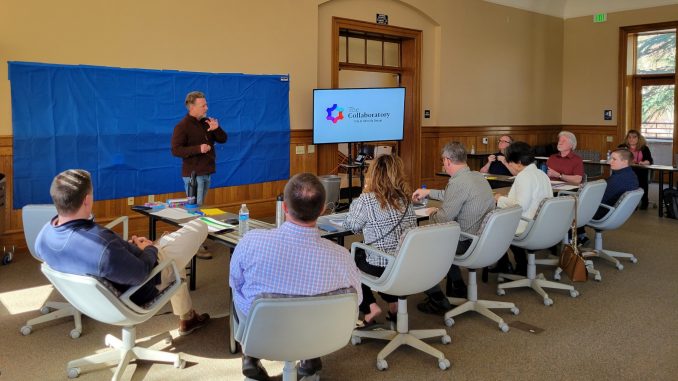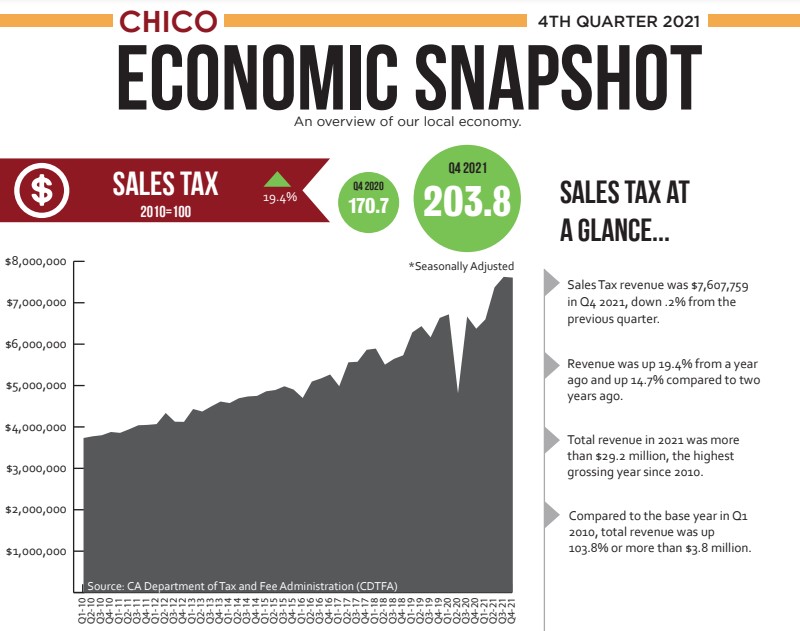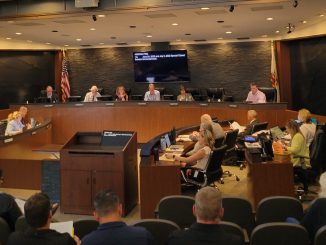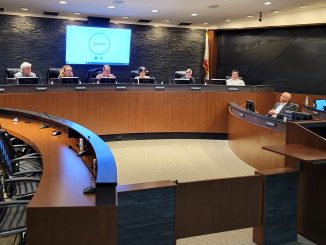
Thursday morning (March 10), City Manager Mark Orme joined Chico Mayor Andrew Coolidge and a couple department heads to relay the state of the city during a videoconference presented by the Chico Chamber of Commerce. The next afternoon, he and the City Council gathered on the second floor of the Old Municipal Building for a strategic planning session.
Little did Orme know that the two events would connect—the State of the City proving a harbinger for the main takeaway from strategic planning.
From two hours of collaborative work Friday, facilitated by Chicoan Scott Winter with a half-dozen staff and a handful of citizens in attendance, council members concluded that public engagement represents a crux point of emphasis. The group crystallized other priorities from the initial session Feb. 25—including housing, infrastructure and public safety—but Councilman Michael O’Brien expressed the overarching sentiment: “You can do all this perfectly, but if you don’t do that [public engagement], you’ll fail.”
Orme got the message, which public commenters hammered home before the meeting adjourned. City manager since 2014, he told the council that “the one time we have engaged in the community where I felt it made a difference” came with the city’s annexation of the Chapman and Mulberry neighborhoods. Leading up to the 2015 decision, forums gave residents a venue to “voice anger” to council members and staff who could “correct” misperceptions and misinformation.
Moving forward, Orme continued, he’ll consider “holistically” how the city can better connect with the community and connect the community with facts—such as at the State of the City, during which he, the mayor, Police Chief Matt Madden and Public Works Director-Operations, Maintenance and Parks Erik Gustafson gave updates on municipal functions, projects and plans.
“The practical vision was defined,” Orme told the CN&R afterward, “and I think [the council members] want to ensure that practical vision remains the focus [of city actions]. That focus is clear … that was affirmed. The next piece that was approved today is there needs to be more communication, more community engagement.
“It was not my expectation,” he added, “so it’s beautiful when these types of conversations lead to one ultimate thing to be focused on to lead to a better environment for our community.”
Coolidge told the CN&R the next morning (March 12) that he had “some inkling” that the strategy discussions would coalesce around communication. He reiterated an example he’d cited, an ad hoc committee on homelessness, for which he and former Councilman Scott Huber met with members of the public in City Council Chambers to discuss the issue.
“We have to communicate not only the message we come away from the strategic planning with, of ‘these are our goals,’ but also inform people what we’re doing on a regular basis and why we’re doing it,” he said, “what the goals behind it are.”
Winter, who facilitates sessions for companies and agencies worldwide, springboarded off consensus reached two Fridays earlier on a mission statement for the city (“A safe place to raise a family, an ideal location for business and a premier place to live”) and six vision statements—covering the topics of budget, economic development, housing, infrastructure, public safety and quality of life. Items not included: serving vulnerable residents (apart from homelessness being a component of housing) and responding to environmental impacts (apart from parks and waterways under quality of life). The two pieces, part of the previous left-leaning council’s priorities, were dropped when the planning process was restarted by the current panel this year.
Winter asked council members to elaborate on the six “strategic directions” their vision had yielded: collaborative advocacy, decision making, funding, perception (i.e., public engagement), responsible growth and staffing. Winter stressed long-term implications, something Coolidge said he found particularly valuable.
They arrived at conclusions on a variety of matters—as broad as reevaluating labor negotiation and as specific as staff indicating on reports how proposals for action would align with the council’s priorities. Civic connection resonated most strongly.
“One of the important things, [and] I brought that up today, is the return to communication with the pubic and the public communicating with us,” O’Brien told the CN&R. “Because of the pandemic and some other dynamics, I think we lost some of that ability and … we’re sensing that in the community on both sides—not just on one side or the other.
“Being able as a council to hear from our constituents, being able to explain some things that maybe we haven’t been able to explain as thoroughly in council [meetings] as we would like, I think finding those avenues is going to be very healthy.”
State of the City
Coolidge saw the State of the City as just such an opportunity. He conferred with Orme for the city’s part of the Thursday morning’s event, which also featured a Chico economic snapshot presented by Golden Valley Bank President Mark Francis (a former councilman) and business confidence survey results reported by commercial realtor Calen Chapman.
Overall, the city’s economy has continued a steady recovery from impacts of the COVID-19 pandemic. Some of this Francis said could be due to the injection of pandemic relief monies, the impact of which could be masking a decline in jobs in the area. Nonetheless, 59 percent of business owners are confident that conditions will be “better” over the next 12 months .

The mayor accentuated developments he deemed significant yet eclipsed by the city’s most prominent issue over the past 18 months, homelessness. He mentioned a memorandum of understanding between Chico and Chico State to bolster policing in the campus area and another agreement for the city and university to develop Lost Park downtown, as well as another joint project—involving Union Pacific as well—to improve fencing along the rail-side bikeway.
“That’s big news in our community, it’s just not exciting news, so it sometimes gets missed,” he told the CN&R. “They’re not glamorous enough to go viral, but they are important enough to be known.”
Orme and his team shared other tidbits. Chico PD filled 20 vacancies last year but still has 18 positions open, including nine sworn officers and a sworn park ranger. The pavement condition for the city’s 568 lane miles rates as poor; the city must triple the annual $3 million budget for road maintenance just to maintain the status quo and jump it to $22 million for significant improvement. The city faces similar issues with the sewer system: 30 percent of the network has reached the end of its useful life.
The city manager framed these and other needs in relation to the 1 percent sales tax measure on the November ballot.
After the strategic planning, thinking back a day, Orme told the CN&R that the State of the City “very well could have been foreshadowing of what was to come. That’s an exciting thing for city staff, because there’s so much going on [that] to be able to get out and share that and answer questions, that’s a good thing for a community.”




“Items not included: serving vulnerable residents (apart from homelessness being a component of housing) and responding to environmental impacts (apart from parks and waterways under quality of life).” What a missed opportunity.